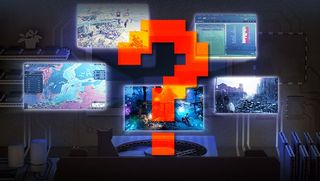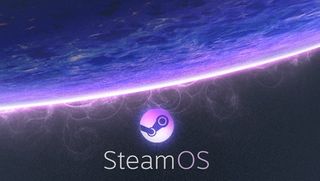SteamOS iswhat, exactly?

Valve has always been a major player in the games market, given that their invaluable Steam client represents a gigantic chunk of the PC domain. So people paid attention when Valve teased three reveals last week--and now, the first cat is out of the bag. SteamOS has just been announced: a new operating system that strives to expand Steam's borders to the living room. This isn't the much-ballyhooed "Steam Box" hardware that would compete with the next generation of consoles--not yet, anyway, because there's no telling what the remaining two announcements will hold. So just what is SteamOS? What, exactly, is Valve trying to accomplish?
"SteamOS combines the rock-solid architecture of Linux with a gaming experience built for the big screen. It will be available soon as a free stand-alone operating system for living room machines." So sayeth Valve's official announcement--now let's see what we can do to decrypt the market speak into something more digestible. First, we need an understanding of Linux. This operating system has always been a distant third behind Microsoft's Windows and Apple's OS X, but some view Linux as the smartest choice for savvy users. That's because Linux is entirely open source, free to anyone that wants it (or anyone who abhors the thought of a paid-for OS license fee). If you're comfortable navigating through complex software, Linux is the equivalent of an open book.

Gabe Newell, Valve's co-founder, managing director, and de facto mascot, is in love with Linux. During his keynote at last week's LinuxCon, Newell stated that "Linux is the future of gaming," despite the fact that Linux gaming is currently all but nonexistent. Newell and his company see it as the only means to growth in a time when PC unit sales are down, an effect of the restrictive nature of the closed platforms currently dominating the market. Newell's convinced that Linux offers the best performance, and has a DIY freedom not possible in any other major platform. That freedom allows for more innovation, by developers and users alike, he said--and right now, it certainly seems like innovation is what will keep core gamers interested.
All that explains why Linux was chosen as the foundation for SteamOS. But what will it run on? What the heck are we supposed to picture when we think of a "living room machine," anyway? SteamOS isn't the first time that Valve set foot into living room territory. Steam's Big Picture mode currently lets you play most of your Steam library on your TV, provided you've got a cable long enough to hook up your rig to your flat screen, or a beefy wireless connection that can accommodate streaming a display to your TV as a second monitor. But all that is a bit too complicated for your average consumer. Joe Schmo wants to go to GameStop, buy an Xbox, hook it up to the TV, and play games. Joe Schmo doesn't want to take the time to build his own gaming PC, prop it up in the living room, and play a limited selection of games with controller support. A Steam Box could streamline that process, so much so that anyone could figure it out.

Will SteamOS have any effect without a companion console? Quite frankly, we have no way of knowing just yet. Depending on the support it gets from publishers and developers, it could very well contend with Windows and OS X as the gamer's choice of operating system. By offering a more welcoming, familiar, and free environment for those uninitiated in the ways of Linux proper, SteamOS could give Linux greenhorns all the performance benefits of the platform. As for getting publishers on board with making their games SteamOS friendly, Newell stated that Valve is working on a Linux debugger to help developers streamline the process. Steamworks, Valve's in-house publishing platform, could also play a part in welcoming outsiders to the fold.
So what we've concluded is this: By unveiling SteamOS, Valve essentially just confirmed that the Steam Box will debut later this week. Valve is ready to compete with Sony, Microsoft, and Nintendo for dominion over the living room gaming experience, and SteamOS is their weapon of choice. Big Picture was a prelude; this is the real McCoy. By establishing their own platform and the open-ended system it runs on, Valve is now making their bid for your hours spent gaming in front of your couch instead of your computer.

It makes sense; Valve already dominates the PC market with Steam distribution, including a store packed with unprecedented deals and free-to-play games like Team Fortress 2 and Dota 2. The family sharing feature that comes with SteamOS sounds like the equivalent to multiple user accounts on an Xbox 360 or PS3; one-time game purchase, multiple people who can enjoy it at their own pace. And not even Sony will be able to hold a candle to the indie presence that comes inherent with the Steam library.
Sign up to the 12DOVE Newsletter
Weekly digests, tales from the communities you love, and more
Even if you've never cared about playing PC games on your couch, SteamOS is worth paying attention to because it marks the first genuine attempt by a major company to meaningfully bridge the gap between PC and console gamers, potentially uniting them under the one roof currently known as the Steam Box. In other words, SteamOS is the first step towards a diversified home console market the likes of which we've never before seen.
Lucas Sullivan is the former US Managing Editor of 12DOVE. Lucas spent seven years working for GR, starting as an Associate Editor in 2012 before climbing the ranks. He left us in 2019 to pursue a career path on the other side of the fence, joining 2K Games as a Global Content Manager. Lucas doesn't get to write about games like Borderlands and Mafia anymore, but he does get to help make and market them.












